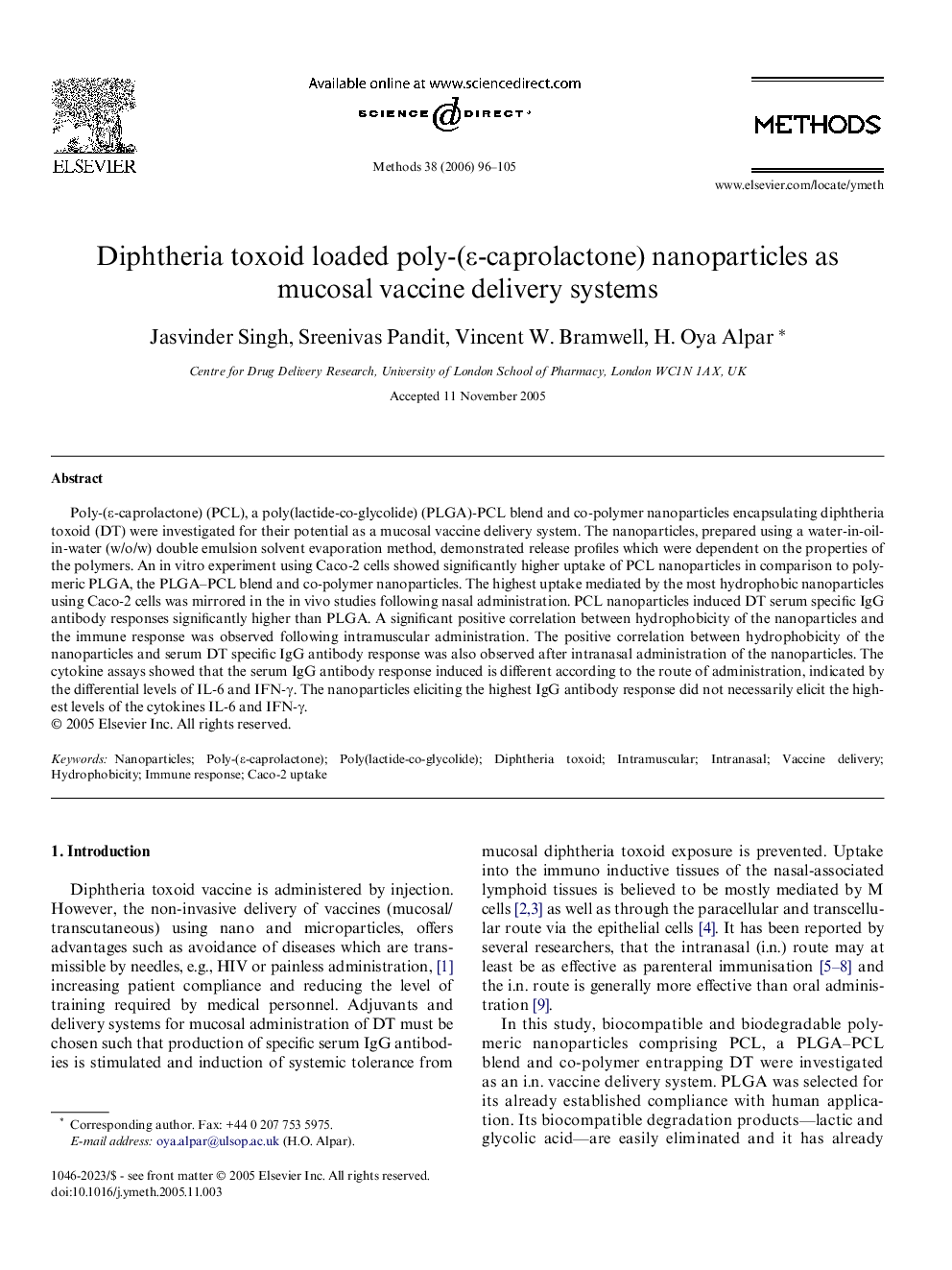| Article ID | Journal | Published Year | Pages | File Type |
|---|---|---|---|---|
| 1994468 | Methods | 2006 | 10 Pages |
Poly-(ε-caprolactone) (PCL), a poly(lactide-co-glycolide) (PLGA)-PCL blend and co-polymer nanoparticles encapsulating diphtheria toxoid (DT) were investigated for their potential as a mucosal vaccine delivery system. The nanoparticles, prepared using a water-in-oil-in-water (w/o/w) double emulsion solvent evaporation method, demonstrated release profiles which were dependent on the properties of the polymers. An in vitro experiment using Caco-2 cells showed significantly higher uptake of PCL nanoparticles in comparison to polymeric PLGA, the PLGA–PCL blend and co-polymer nanoparticles. The highest uptake mediated by the most hydrophobic nanoparticles using Caco-2 cells was mirrored in the in vivo studies following nasal administration. PCL nanoparticles induced DT serum specific IgG antibody responses significantly higher than PLGA. A significant positive correlation between hydrophobicity of the nanoparticles and the immune response was observed following intramuscular administration. The positive correlation between hydrophobicity of the nanoparticles and serum DT specific IgG antibody response was also observed after intranasal administration of the nanoparticles. The cytokine assays showed that the serum IgG antibody response induced is different according to the route of administration, indicated by the differential levels of IL-6 and IFN-γ. The nanoparticles eliciting the highest IgG antibody response did not necessarily elicit the highest levels of the cytokines IL-6 and IFN-γ.
